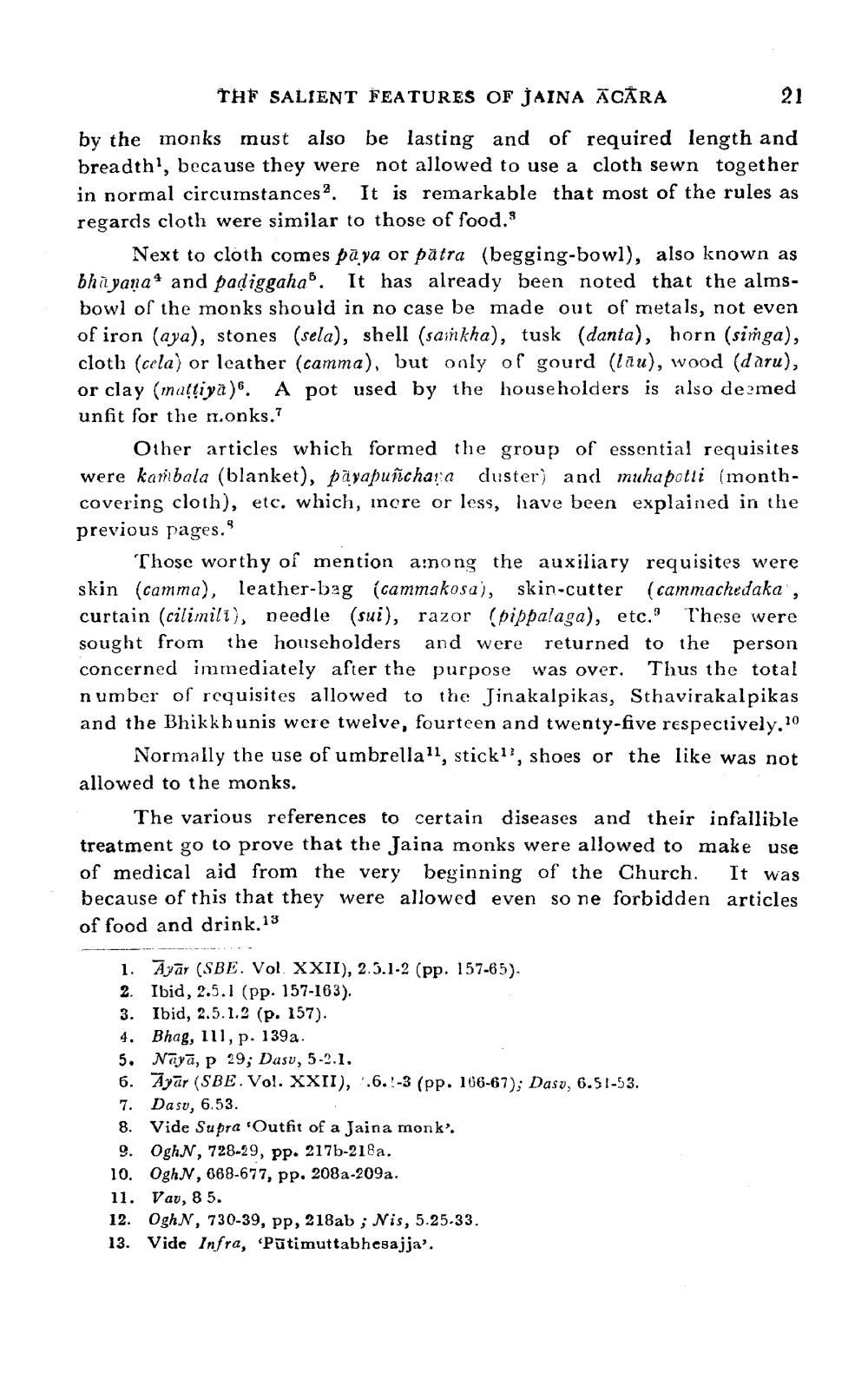________________
THE SALIENT FEATURES OF JAINA ĀCĀRA 21 by the monks must also be lasting and of required length and breadth", because they were not allowed to use a cloth sewn together in normal circumstancesa. It is remarkable that most of the rules as regards cloth were similar to those of food.
Next to cloth comes paya or pătra (begging-bowl), also known as bhū yanao and padiggaha. It has already been noted that the almsbowl of the monks should in no case be made out of metals, not even of iron (aya), stones (sela), shell (saikha), tusk (danta), horn (simga), cloth (ccla) or leather (camma), but only of gourd (lau), wood (daru), or clay (mattiya). A pot used by the house holders is also deemed unfit for the monks.
Other articles which formed the group of essential requisites were karbala (blanket), payapuñchara duster) and muhapotli (monthcovering cloth), etc. which, inore or less, have been explained in the previous pages.
Those worthy of mention ainong the auxiliary requisites were skin (camma), leather-bag (cammakosa), skin-cutter (cammachedaka , curtain (cilimili), needle (sui), razor (pippalaga), etc. These were sought from the householders and were returned to the person concerned immediately after the purpose was over. Thus the total number of requisites allowed to the Jinakalpikas, Sthavirakalpikas and the Bhikkhunis were twelve, fourteen and twenty-five respectively. 10
Normally the use of umbrella", stick??, shoes or the like was not allowed to the monks.
The various references to certain diseases and their infallible treatment go to prove that the Jaina monks were allowed to make use of medical aid from the very beginning of the Church. It was because of this that they were allowed even so ne forbidden articles of food and drink.13
1. Ayar (SBE. Vol. XXII), 2.3.1-2 (pp. 157-65). 2. Ibid, 2.5.1 (pp. 157-163). 3. Ibid, 2.5.1.2 (p. 157). 4. Bhag, 111, p. 139a. 5. Nāyā, p 29; Dasv, 5-2.1. 6. Ayar (SBE. Vol. XXII), .6.-3 (pp. 106-67); Dasv, 6.51-53. 7. Dasu, 6.53. 8. Vide Supra "Outfit of a Jaina monk'. 9. OghN, 728-29, pp. 217b-218a. 10. OghN, 668-677, pp. 208a-209a. 11. Vav, 85. 12. OghN, 730-39, pp, 218ab ; Nis, 5.25.33. 13. Vide Infra, “Pūtimuttabhesajja'.




